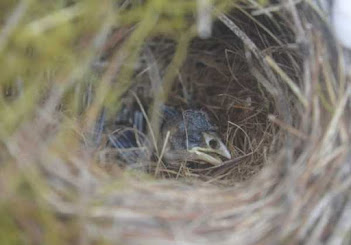 |
| Researchers at SLAC, Stanford University and Washington University studied a protein that helps transport electrons during bacterial photosynthesis. Jared Weaver/Stanford University |
The study focused on proteins called reaction centers in a bacterium called Rhodobacter sphaeroides that help transport electrons in its cell membrane during the first steps of photosynthesis. Although these proteins, which reside in the cell membrane, have been studied for decades, many details of how they work remain unclear. To try to fill in some of those details, Stanford University's Jared Weaver, a graduate student in chemist Steven Boxer's laboratory, worked with fellow Stanford chemist Chi-Yun Lin and Washington University researchers Kaitlyn Fairies, Dewey Holten, and Chris Kirmaier, who have been studying R. sphaeroides reaction centers for over a decade. Their apporach was to replace part of the protein with amino acids – protein building blocks – that do not naturally appear in that part of the protein structure. The results could help researchers better understand how the electron-transporting protein works under normal operation.
As part of those investigations, Weaver teamed up with Irimpan Mathews, a staff scientist at the Stanford Synchrotron Radiation Lightsource (SSRL) at the Department of Energy's SLAC National Accelerator Laboratory. There, the pair worked to crystallize the modified photosynthetic proteins and study them with X-ray macromolecular crystallography at one of SSRL's beamlines.















.jpg)
